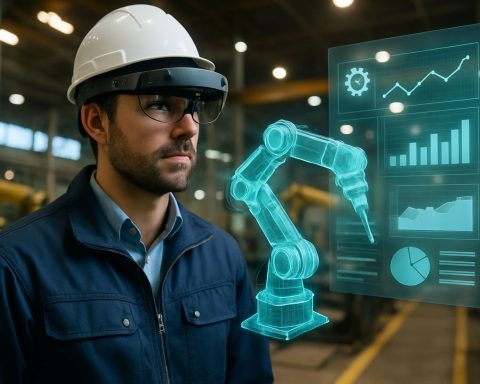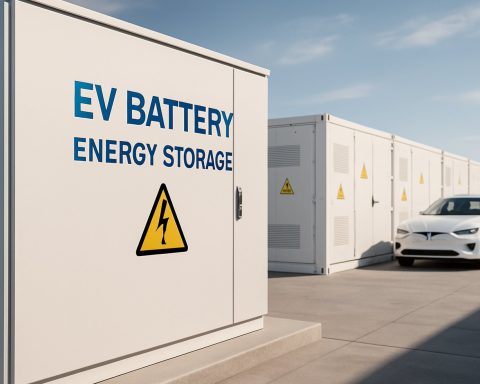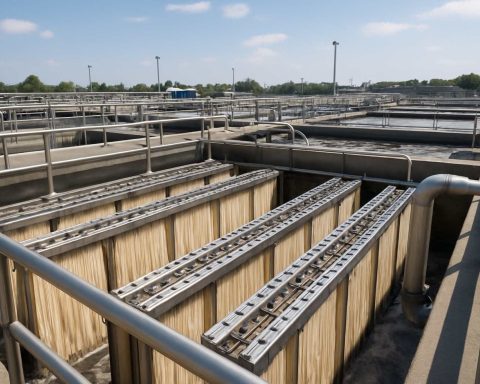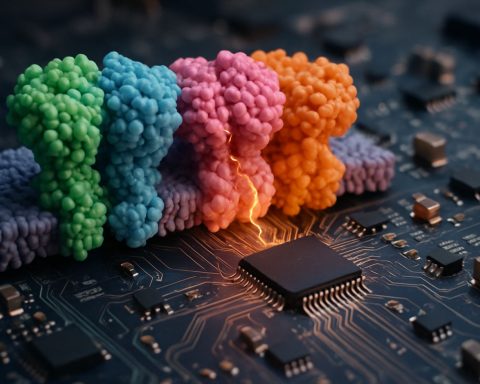- Nuclear energy currently provides 40% of Maryland’s power and 80% of its carbon-free energy, emphasizing its importance in the state’s energy mix.
- Advocates are pushing for legislative recognition and incentives to support the nuclear sector amidst rising energy demands and climate goals.
- Plans for the Calvert Cliffs plant aim to extend its operational lifespan, while new technologies like small modular reactors offer innovative solutions.
- Draft legislation proposes elevating nuclear energy to “tier 1” status, which would facilitate access to key subsidies.
- Public perception is shifting in favor of nuclear energy, driven by its safety and reliability as communities increasingly support its development.
- The outcome of nuclear energy’s role in Maryland’s energy strategy could significantly influence the state’s pathway to a sustainable future.
As debates heat up over Maryland’s energy landscape, the nuclear energy sector is stepping into the spotlight, commanding attention for its crucial role. Currently generating 40% of the state’s power and a staggering 80% of its carbon-free energy, nuclear power advocates argue it’s time for legislators to recognize its value—and offer incentives.
In an electrifying session before the House Economic Matters Committee, a prominent industry leader passionately advocated for nuclear’s potential to stabilize energy supply amid soaring prices and ambitious clean energy goals. The legacy of the Calvert Cliffs nuclear plant looms large, with plans to extend its lifespan for decades to come. But the future of this energy source may also lie in innovative small modular reactors, requiring less land and resources.
Draft legislation aims to elevate nuclear energy to “tier 1” status, unlocking essential subsidies for its development. Yet, lawmakers remain cautious. One influential committee chair reminded attendees that while newer technologies offer promise, they come with complex challenges that go beyond merely championing nuclear power.
With solar and wind technologies still struggling, many policymakers see nuclear as a vital player in achieving a sustainable energy future. Advocates highlight that public perception is shifting, with communities increasingly embracing nuclear energy for its safety and reliability.
As Maryland navigates its ambitious energy strategy, nuclear power appears poised to play a pivotal role. The decisive question remains: Can it truly lead the charge toward a greener future? Keep an eye on this unfolding narrative—it could change the state’s energy game forever!
Is Maryland’s Energy Future Nuclear-Powered? Explore the Pros and Cons!
Overview of Maryland’s Nuclear Energy Landscape
As Maryland’s energy debates intensify, nuclear energy emerges as a central player in the state’s pursuit of a sustainable energy future. Currently, nuclear power accounts for 40% of Maryland’s total energy generation, providing an impressive 80% of the state’s carbon-free energy. Advocates argue that recognizing nuclear power’s value and providing legislative incentives are crucial steps as the state seeks to balance energy supply, environmental goals, and economic challenges.
New Insights and Relevant Information
1. Innovative Technologies: The development of small modular reactors (SMRs) represents a key innovation in nuclear energy. These reactors require less land and resources, making them potentially easier to deploy and integrate into existing power grids.
2. Market Forecasts: Industry analysts predict a substantial increase in nuclear energy investment over the next decade as states and countries ramp up efforts to meet carbon neutrality goals. This trend highlights a growing recognition of nuclear power as a reliable alternative to fossil fuels.
3. Public Perception Shift: Recent surveys indicate that an increasing number of Maryland residents view nuclear energy favorably, emphasizing its safety and reliability compared to traditional energy sources. This shift could influence legislative support and funding for nuclear initiatives.
4. Legislative Changes: Draft legislation currently aims to elevate nuclear energy to “tier 1” status, which would unlock subsidies critical for the development and sustainability of nuclear projects in Maryland.
5. Environmental Considerations: As concerns over climate change and carbon emissions grow, nuclear energy is increasingly viewed as an essential part of the solution, especially as solar and wind technologies continue to face challenges in scalability and consistency.
Key Questions and Answers
1. What are the primary benefits of nuclear energy for Maryland?
– Nuclear energy provides a stable and reliable source of power that can operate continuously, unlike intermittent renewable sources. It significantly contributes to the state’s carbon-free energy goals, which are crucial for combating climate change.
2. What challenges does the nuclear sector face in Maryland?
– The nuclear sector grapples with public misconceptions about safety, the high costs associated with technology upgrades and plant maintenance, and regulatory hurdles that can impede new developments.
3. How can small modular reactors impact Maryland’s energy landscape?
– Small modular reactors could offer a more flexible and less resource-intensive way to integrate nuclear energy into the grid, potentially reducing land use and addressing some of the concerns associated with larger traditional reactors.
Conclusion
As Maryland evaluates its clean energy strategies, nuclear power stands out as a vital option. With ongoing legislative discussions, public support, and emerging technologies, the state’s energy landscape may soon undergo transformative changes. The path forward may lead Maryland towards a greener, more sustainable future powered by nuclear energy.
For deeper insights into energy policies and developments, visit energy.gov.











